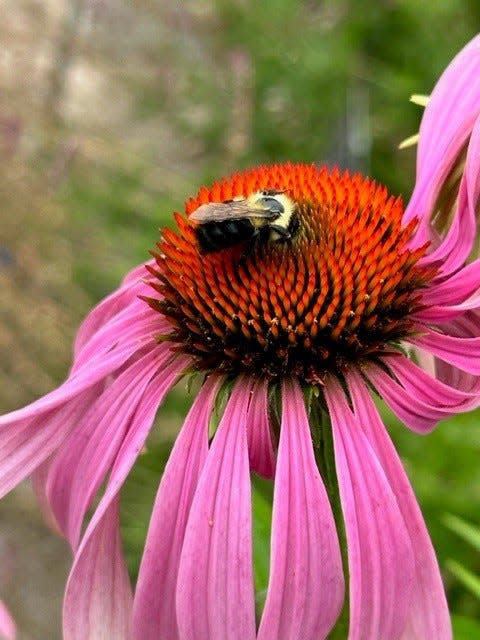Jeremy Rhoden: The beauty of Purple Coneflower

Echinacea purpurea, or Purple Coneflower, is a popular favorite across the nation. This plant produces large flowers with, as the name implies, a cone that sits as the flower head. Many pollinators love the Purple Coneflower, and you’re inclined to find such insects just sitting on the cone, much like a mattress, resting. These plants are considered a perennial that will bloom year after year starting in spring and going through the end of summer.
Though these plants are hardy and considered drought-tolerant, they still have favorable conditions. In Florida, it is best to plant Purple Coneflower in part-sun or shade, and in well-drained soils. Though they prefer well-drained soils, they also have been found to successfully grow in occasionally wet soils.
Purple Coneflower can get up to 3 feet tall and form 3-foot-wide clumps. They can easily be propagated by root cuttings or separating their clumps.
The large, showy flower will bring much attention to any landscape, and it makes a wonderful perennial border. The shade of purple varies from deep purple, light purple, pink and even white in native varieties. Several improved varieties — such as “Mac ’n’ Cheese,” “Hot Papaya” and “Raspberry Truffle” — have brighter flowers and withstand wetter soils, but do not attract as many pollinators as the natives.
The most common pest that affects Purple Coneflower is sweet potato whitefly, but the majority of the time the plant can withstand the pest pressure without having to be treated, one of the many reasons it's considered Florida-friendly.
Purple Coneflower is commonly used today in many pharmaceutical products and historically was used by Native Americans for toothaches, headaches, sore throats and for calming horses. The roots of this plant have been used for skin diseases, snakebites, and treating rabies and other ailments.
For more information on the Purple Coneflower, visit edis.ifas.ufl.edu/publication/FP192.
August to-do list
Annuals/bedding plants: We are entering into the hottest months of the year, so it’s best to refrain from planting anything but heat-tolerant plants, such as coleus and vinca.
Vegetables: Starting in mid-August, you can begin planting fall crops, such as carrots, tomatoes and beans. If you’re wanting to wait a bit longer before starting your vegetables, consider solarizing your garden bed to rid the soil of harmful nematodes and weed seeds.
Palms: If your palm fronds appear to be yellowing, they may be deficient in magnesium or potassium. Check your local garden center to find an appropriate fertilizer for your palm.
Fertilizer bans: Depending on your location, fertilizer bans may be in effect this time of year. Check with your local municipalities to see if such an ordinance exists in your area.
Annuals/perennials/bedding plants: Deadhead spent flowers, cutback and fertilize these flowering plants to extend their blooming into late fall.
Upcoming events at UF/IFAS Extension, Marion County: 8 a.m.-noon Oct. 7, Master Gardener Fall Plant Sale, specializing in natives and Florida-friendly plant options. All proceeds benefit the Marion County Master Gardener Program educational outreach efforts to Marion County residents.
— Jeremy Rhoden is the Urban and Residential Horticulture Extension Agent and Master Gardener Volunteer Coordinator at the UF/IFAS Extension Marion County. For more information, contact the office at 671-8400. The Extension Service is located at 2232 NE Jacksonville Road, Ocala, FL 34470.
This article originally appeared on The Gainesville Sun: Jeremy Rhoden: The beauty of Purple Coneflower